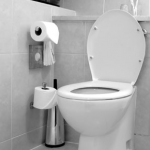Blood pressure refers to the pressure that blood exerts on the walls of the blood vessels. Systolic blood pressure refers to pressure measured during contraction of the heart and subsequent pumping of blood into the varied vessels, while diastolic pressure refers to blood pressure measures during cardiac relaxation when it gets filled with blood.
Blood pressure is measured in units of mmHgor millimeters of mercury. For adults, the normal blood pressure range is 120/80 mmHg; it can be somewhat different for men and women over 40 years old.
As per American Heart Association, high blood pressure can trigger serious conditions like stroke, cardiac arrest, brain damage, paralysis, and kidney failure,etc.In the US, hypertension causes nearly 350,000 preventable deaths per year.
Low and high blood pressure and prehypertension
Higher than normal levels of blood pressure is known as hypertension or high blood pressure. It imposes additional strain on the arteries and the heart and is an indicative of the fact that extra pressure is exerted by the heart to pump certain amounts of blood in a certain timeframe. Aging is marked by higher blood pressure.
Lower than normal levels of blood pressure is referred to as hypotension or low blood pressure. Its effects are just the opposite of hypertension. It typically causes dizziness.
Prehypertension refers to a condition when BP levels are slightly more than normal. In such cases, the diastolic pressure may fall between 80 and 89 while systolic blood pressure may fall between 120 and 139. Patients with prehypertension are increasingly susceptible to developing high BP. However, simple lifestyle and dietary changes can help normalize it.
The official BP percentile charts by weight, height, BMI/Body Mass Index information of certain groups of adults and children are present in all clinics.
Blood Pressure Chart
| BP Level | Diastolic pressure in mmHg | Systolic pressure in mmHg |
| Hypotension/Low BP | 35 to 60 | 50 to 90 |
| Mild low BP | 60 to 70 | 90 to 100 |
| Normal BP | 70 to 85 | 100 to 130 |
| Mild high BP | 85 to 90 | 130 to 140 |
| Moderately high BP | 90 to 110 | 140 to 160 |
| Hypertension/High BP | 110 to 135 | 160 to 230 |
Factors affecting blood pressure
The levels of blood pressure tend to change with each passing minute. It differs as per gender, age, weight, height, and general health of an individual. Some factors that seriously affect the blood pressure are listed below:
- Emotional or physical stress
- Increased consumption of common salt
- Intake of incorrect diet
- Living a sedentary life
- Alcohol abuse
- Smoking
- Pregnancy
- Excess intake of caffeine or nicotine
- Increased use of oral contraceptives or birth control pills
- Increased weight, obesity
- A family history or genetic predisposition to BP problems
- Menopause marked by a significant drop in estrogen levels. It may be noted that estrogen hormone plays a role in BP regulation.
It may be noted that babies with congenital kidney or heart problems, or preterm delivered babies, i.e., those born before the completion of 37 weeks of pregnancy, may suffer from symptoms of elevated blood pressure.
Studies have shown that a family history of high blood pressure combined with an unhealthy or sedentary lifestyle are the main factors that increase the risk to occurrence of BP problems.
- It has also been found that increased intake of salt and obesity are the major factors that contribute towards development of high blood pressure in children of the age group between 8 and 17 years.
- Elevated BP in teens can occur due to factors like increased intake of junk food, inadequate exercising or physical activity, deficiency of vital nutrients in the diet, bigger waistline, stress, and above normal body mass.
Adults and Children Blood Pressure Chart as per age
| Group | Age in years | Diastolic blood pressure | Systolic blood pressure |
| Kids | 3 to 6 | 76 | 116 |
| Kids | 7 to 10 | 78 | 122 |
| Kids | 11 to 13 | 82 | 126 |
| Teens | 14 to 16 | 86 | 136 |
| Adults | 20 to 24 | 79 | 120 |
| Adults | 25 to 29 | 80 | 121 |
| Adults | 30 to 34 | 81 | 122 |
| Adults | 35 to 39 | 82 | 123 |
| Adults | 40 to 44 | 83 | 125 |
| Adults | 45 to 50 | 84 | 127 |
| Adults | 50 to 54 | 85 | 129 |
| Adults | 55 to 60 | 86 | 131 |
| Adults | 60 years and over | 87 | 134 |
It may be noted that the optimal blood pressure level for young adults aged between 17 to 19 years is equal to or less than 85 diastolic BP, and equal to or less than 120 systolic BP.
Blood Pressure Chart for Children as per Gender
| Age | Female (BP in mmHg) | Male (BP in mmHg) |
| 1 to 3 years old | 83/38 to 117/76 | 80/34 to 120/75 |
| 4 to 6 years old | 88/50 to 122/83 | 88/47 to 128/84 |
| 7 to 10 years old | 93/55 to 129/88 | 92/53 to 130/90 |

